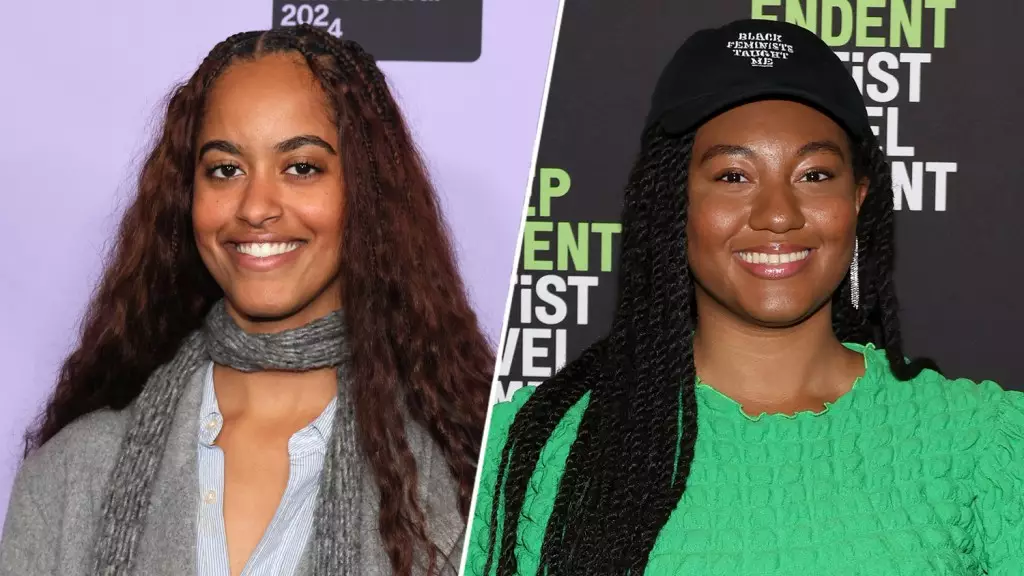The world of filmmaking is often likened to an intricate tapestry woven from various influences and inspirations. However, when those threads cross to the point of apparent imitation, the resulting fabric can lead to discomfort and controversy. This issue has recently come to light with Malia Obama’s debut short film, “The Heart,” which premiered at the 2024 Sundance Film Festival. Following its release, Obama found herself at the center of a heated debate, accused by fellow filmmaker Natalie Jasmine Harris of borrowing too heavily from Harris’s own work. The broader implications of this incident unveil stark questions about originality, recognition, and the complexities of artistic expression in contemporary cinema.
A Clash of Visions
Natalie Jasmine Harris, whose film “Grace” premiered the previous year at Sundance, proudly tackled themes entwined within the Black Southern Gothic narrative. When she first saw the Nike commercial featuring Obama, which starred WNBA player A’ja Wilson, Harris couldn’t shake the sensations of déjà vu. It’s an unsettling feeling when art that tells your story appears to be echoed in another’s work, especially when it’s intertwined with someone as prominent as Malia Obama. Harris recounted her emotional turmoil, transitioning from confusion to disappointment as she discerned frame similarities and shared stylistic choices between her film and the commercial.
The dispute raises a vital question: how much inspiration is too much? Art has always thrived on influence, but there is a fine line between homage and appropriation. Harris’s assessment that their works share specific cinematic techniques speaks volumes, suggesting that the intricate, personal touch she brought to her film was not honored, leaving a bitter taste in her mouth. The narrative she crafted deserves recognition, even acknowledgment, in the broader discourse about the filmmaking process.
The Bigger Picture: A Call for Equity
At the heart of this controversy lies a more profound issue concerning the industry’s systemic flaws. As Harris pointedly noted, big brands like Nike often sidestep promising independent artists instead choosing to collaborate with those who have established names in their own right. This creates an echo chamber within the creative landscape that stifles innovation and authentic storytelling. What does it say about the film industry when emerging voices find themselves silenced by the allure of celebrity?
One must ponder the ramifications of such choices on the next generation of filmmakers. If up-and-coming artists like Harris are regularly overlooked in favor of Hollywood luminaries, how can we expect fresh narratives or diverse perspectives to flourish? Perhaps the real tragedy here is not simply about one ad echoing another filmmaker’s vision, but rather the broader denial of opportunities for those who are trying to carve out a space in an already crowded cinematic milieu.
Confronting the Complexity of Artistic Influence
Artistic expression is, by its nature, a complex terrain, filled with gray areas that don’t always lend themselves to simple definitions. Harris’s frustration with the apparent similarities in camera angles, framing, and color palettes may be valid, but it also prompts a deeper examination of the relationships between artists and their inspirations. In the realm of art, how do we delineate between influence and imitation? Shouldn’t a thriving artistic community allow for the sharing of ideas in a respectful manner?
This conversation must acknowledge the contributions and sacrifices of independent filmmakers while simultaneously recognizing that the industry’s value system often privileges those tied to a legacy of privilege. As artists like Malia Obama rise in recognition, it becomes increasingly critical to reflect on who gets to tell the stories and whose voices are drowned out in the cacophony.
The Personal Struggle of Visibility
For Harris, stepping forward was not merely about defending her work; it was also an act of courage in a landscape where voices often go unheard. She faced the overwhelming task of balancing respect for a public figure with the need to advocate for the integrity of her artistry. This delicate balance forms a crucial prism through which we can understand the dilemma of emerging artists in an age defined by celebrity culture and overwhelming brand power.
In a world that values fame over originality, Harris’s assertion rings clear: acknowledgment matters, not just as an emotional salve, but as a crucial step toward fostering an environment where independent storytellers can thrive. The struggle for visibility is not just about one filmmaker’s hurt; it’s a call to re-assess the ways in which we support and uplift diverse voices within the film narrative. The implications of this discourse resonate far beyond a single incident, echoing throughout the artistic community and demanding thoughtful reflection on the relationships we build as creators.

